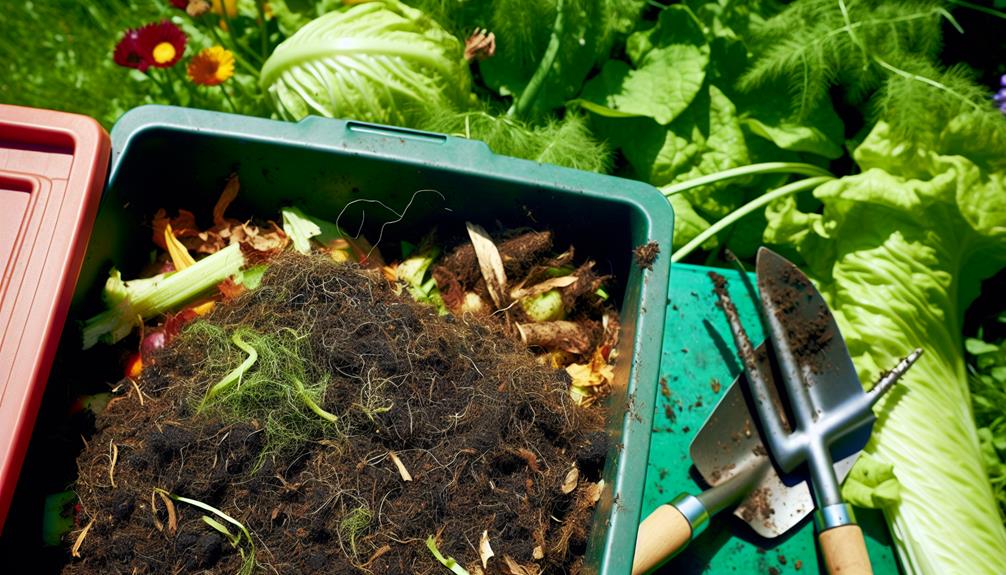

You can definitely compost animal hair. It’s important for plant growth as it is rich in nitrogen. Both pet and human hair break down well in compost, providing a steady release of nutrients. Make sure the hair is clean, chemical-free, and cut into smaller pieces for efficient decomposition. Mix hair with other compost materials to balance nitrogen and carbon, as this enhances the breakdown process.
Turn your compost regularly to introduce oxygen and speed up decomposition. Avoid synthetic hair, as it doesn’t decompose and can introduce harmful chemicals. By doing this, you’re not only reducing waste but also improving your soil’s quality. Discover more tips and tricks to optimize your composting efforts.
Composting animal hair enriches your soil with essential nutrients. Hair is rich in nitrogen, a critical component for plant growth. When you add it to your compost pile, it breaks down slowly, providing a steady release of nutrients over time. This slow decomposition helps improve soil structure and water retention, promoting healthier plants.
To maximize these benefits, mix the hair with other compost materials like kitchen scraps and yard waste. This creates a balanced environment for decomposition. Make sure to cut the hair into smaller pieces to speed up the process. Regularly turning your compost pile will also guarantee even breakdown.
Also Read: Can You Compost Azuki Beans?
When composting hair, you can include pet hair and human hair, as both decompose well and add valuable nutrients to your compost pile. However, exclude synthetic hair since it doesn’t break down and can contaminate your compost.
Stick to natural hair types for the best results.
Your pet’s hair, whether it’s from a dog, cat, or rabbit, can be a valuable addition to your compost pile. Pet hair is rich in nitrogen, which is an essential component for composting. When you add it to your compost, it helps balance the carbon-rich materials like leaves and paper. This balance accelerates the decomposition process, making your compost richer and more effective.
To use pet hair effectively, sprinkle it evenly throughout your compost pile. Avoid clumping, as this can slow down decomposition. Mixing it with other materials ensures it breaks down properly.
Also, pet hair contains proteins that benefit soil microbes, enhancing the overall health of your compost. So, don’t hesitate—add that pet hair to your compost today!
Just like pet hair, human hair is also a valuable nitrogen-rich material you can add to your compost. It breaks down readily, enriching your compost with essential nutrients. Hair clippings from haircuts, beard trimmings, and even body hair can be composted. When adding human hair to your compost, mix it well with other materials to promote aeration and avoid matting. Here’s a quick guide:
| Hair Type | Benefits | Tips for Composting |
|---|---|---|
| Hair Clippings | Nitrogen-rich | Mix with dry materials |
| Beard Trimmings | Breaks down easily | Avoid large clumps |
| Body Hair | Adds nutrients | Combine with green waste |
| Hair from Brushes | Reduces waste | Sprinkle evenly |
Not all hair types are suitable for composting, and it’s crucial to exclude synthetic hair from your compost pile. Synthetic hair, made from materials like plastic or nylon, doesn’t break down naturally. Including it in your compost can introduce harmful chemicals and microplastics into the soil.
Instead, focus on composting natural hair types, such as animal hair and human hair that isn’t dyed or treated with harsh chemicals. Make sure to remove any synthetic hair extensions or wigs before adding hair to your compost. By doing so, you’ll guarantee that your compost remains organic and beneficial for your garden.
Also Read: Can You Compost Bacon?
To ready animal hair for composting, make sure it’s clean and free of any chemical treatments. Start by washing the hair thoroughly to remove dirt, oils, or residues. Once clean, let it dry completely.

Here’s a step-by-step guide:
Gather the hair from grooming sessions or pet salons, ensuring no chemical treatments were used.
Thoroughly wash the hair with plain water, avoiding any soaps or shampoos that could contain chemicals. After washing, spread the hair out to air dry.
For faster decomposition, cut the hair into smaller pieces using scissors. This increases the surface area, helping microbes break it down more efficiently in the compost.
Balancing green and brown materials is essential for an effective composting process, ensuring proper decomposition and nutrient cycling. Greens, like fruit scraps and fresh grass clippings, are rich in nitrogen, while browns, such as dried leaves and cardboard, provide carbon.
Aim for a ratio of roughly 2 parts greens to 1 part browns. This balance helps maintain the right temperature and moisture levels in your compost pile, preventing it from becoming too wet or dry.
Turn your compost regularly to aerate it, promoting microbial activity. If your pile starts to smell, it likely has too many greens; add more browns. Conversely, if it’s not decomposing well, add more greens. Monitor and adjust as needed for best results.
Incorporating animal hair into your compost can greatly enhance its nutrient content. To do this effectively, follow these steps:
Adding hair enriches your compost with essential nutrients, promoting healthier soil and plants. Just remember to mix and balance it properly for the best results.
Accelerate the decomposition of your compost by ensuring it stays moist and well-aerated. Turn the pile regularly to introduce oxygen, which is essential for microbial activity. Aim for a moisture level similar to a wrung-out sponge; too dry, and decomposition slows, too wet, and it becomes anaerobic.
Adding a mix of green (nitrogen-rich) materials like kitchen scraps and brown (carbon-rich) materials such as dried leaves balances the pile. Shred or chop larger items to increase surface area, promoting faster breakdown. Consider adding a compost activator or a handful of garden soil to introduce beneficial microorganisms.
These steps will help break down animal hair and other organic matter efficiently, resulting in rich, usable compost.
Also Read: Can You Compost Balloon?
When composting animal hair, it’s essential to avoid common mistakes like incorrect material ratios and poor aeration practices.
Make sure you balance green and brown materials to maintain an ideal carbon-to-nitrogen ratio.
Additionally, regularly turning the compost pile guarantees proper aeration, which speeds up decomposition and prevents foul odors.
Balancing the right mix of greens and browns is crucial to avoid common composting mistakes. Greens, like fruit scraps and grass clippings, provide nitrogen. Browns, such as dried leaves and cardboard, offer carbon. When ratios are off, your compost may smell or decompose slowly.
To guarantee a balanced mix, follow these steps:
Guaranteeing proper aeration in your compost pile is just as crucial as maintaining the right mix of materials. Without enough air, your compost can become smelly and attract pests. Turn your compost regularly, at least once a week, to introduce oxygen. Avoid compacting materials; instead, layer them loosely. Use a pitchfork or compost aerator to break up clumps. Incorporate coarse materials like straw or wood chips to enhance airflow.
| Problem | Solution | Tools |
|---|---|---|
| Compaction | Layer loosely | Pitchfork |
| Lack of oxygen | Turn weekly | Compost aerator |
| Poor airflow | Add coarse materials | Straw, Wood chips |
Proper aeration ensures efficient decomposition and a healthier compost pile.
Once your compost is ready, you can use it to enrich your garden soil and boost plant growth.
Spread a layer of finished compost over your garden beds to improve soil structure and nutrient content.
Here are three ways to effectively use your compost:
Don’t forget to keep an eye on your plants and adjust compost application as needed. Your garden will thrive with the added organic matter and beneficial microorganisms.
Also Read: Can You Compost Azuki Beans?
Composting animal hair greatly reduces waste and decreases the burden on landfills. When you compost animal hair, you’re turning a potential pollutant into a valuable resource. Hair is rich in nitrogen, which is essential for creating nutrient-dense compost. By adding it to your compost pile, you’re enhancing the soil quality and promoting plant growth.

Additionally, composting animal hair minimizes methane emissions from landfills. Landfilled organic materials decompose anaerobically, producing methane, a potent greenhouse gas. By composting, you guarantee hair breaks down aerobically, which is more environmentally friendly.
To compost animal hair effectively, mix it well with other compostable materials like vegetable scraps and leaves. This helps maintain a balanced carbon-to-nitrogen ratio, vital for efficient composting.
To wrap up, composting animal hair is straightforward and beneficial. Start by ensuring the hair is clean and free from contaminants.
Mix it with other green and brown materials to maintain a balanced compost. Shred the hair to speed up decomposition.
Avoid common mistakes like adding too much hair at once. Use your finished compost to enrich your garden soil, helping plants thrive while reducing waste. By composting hair, you’re contributing to a healthier environment.
